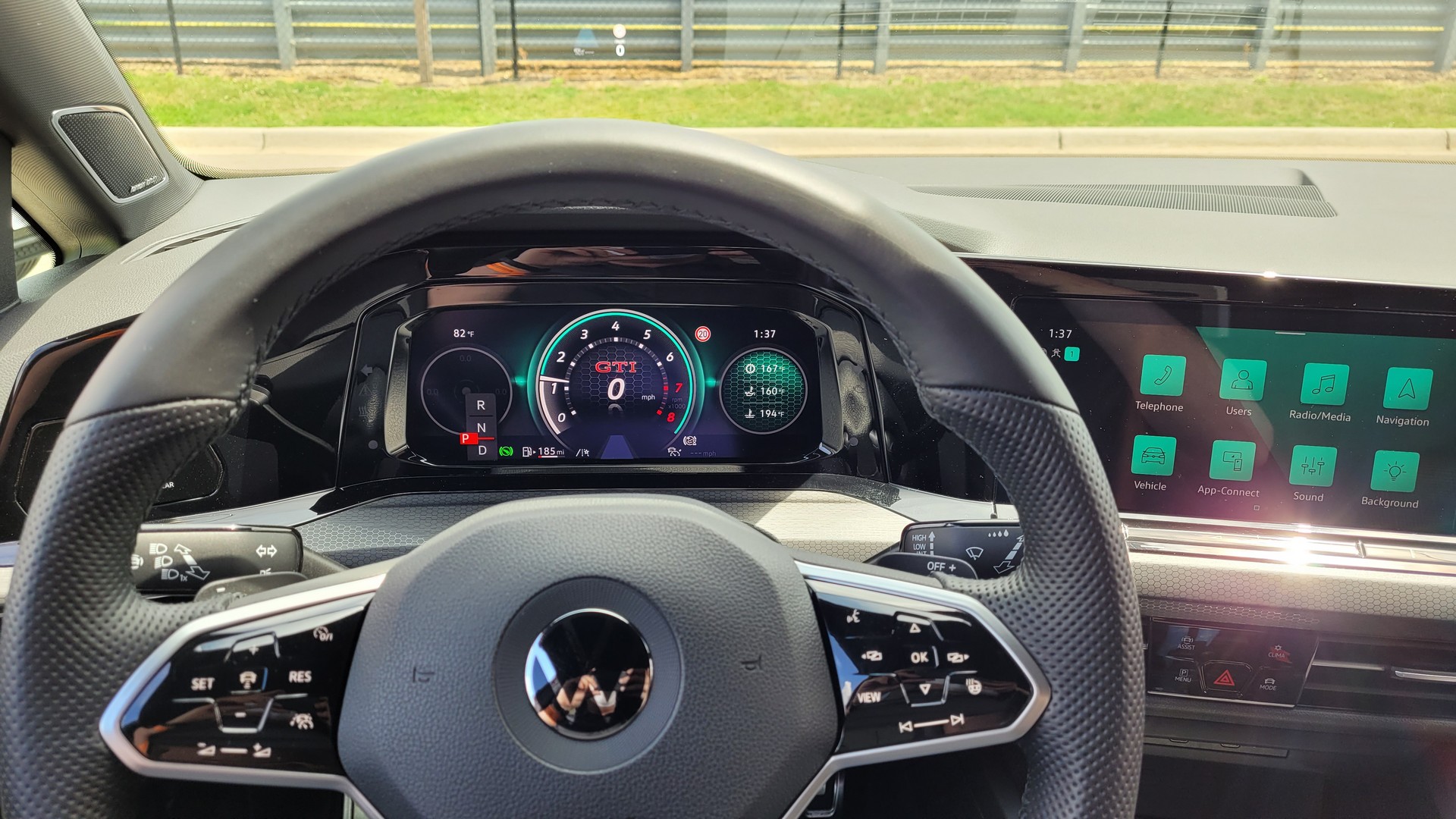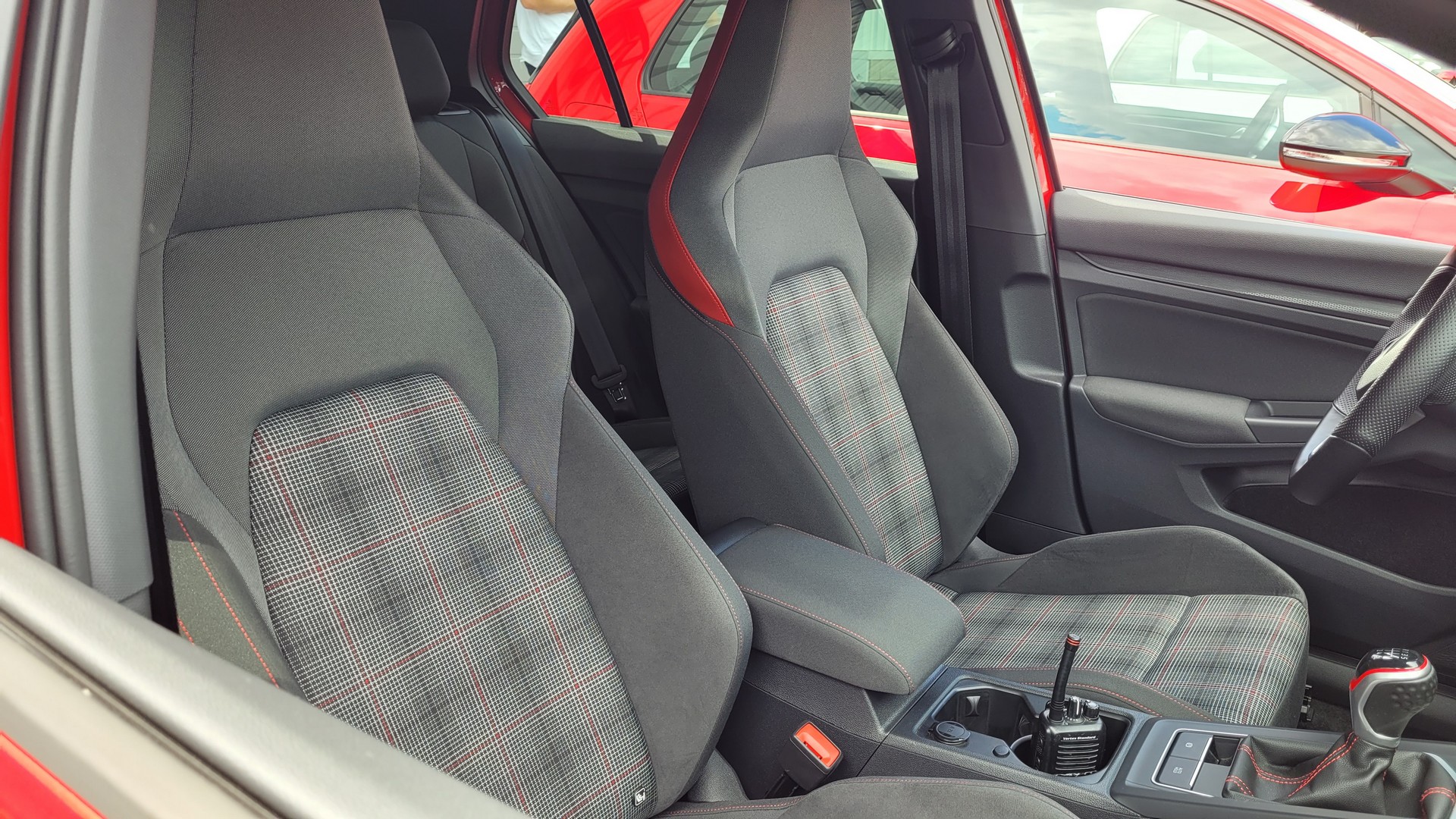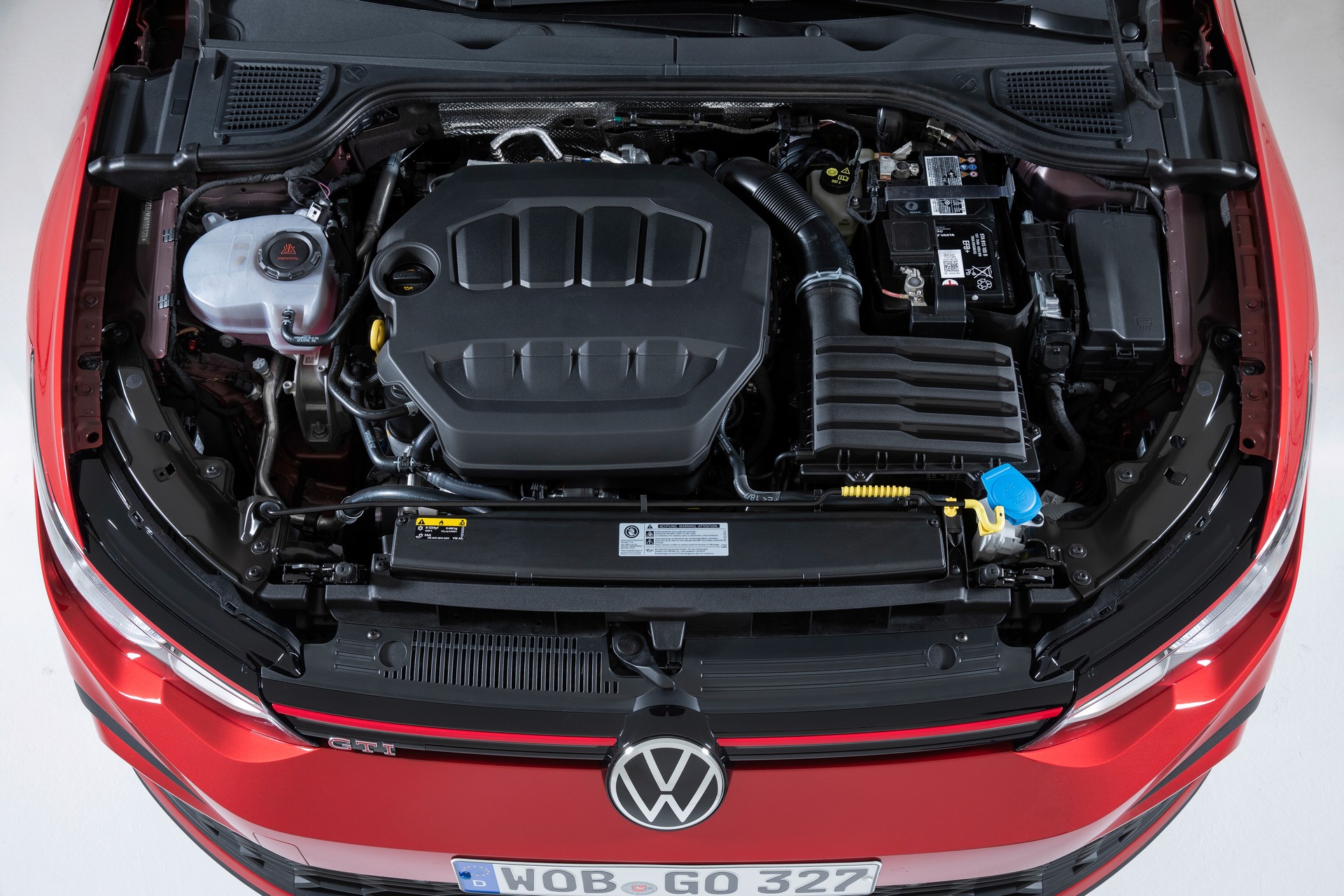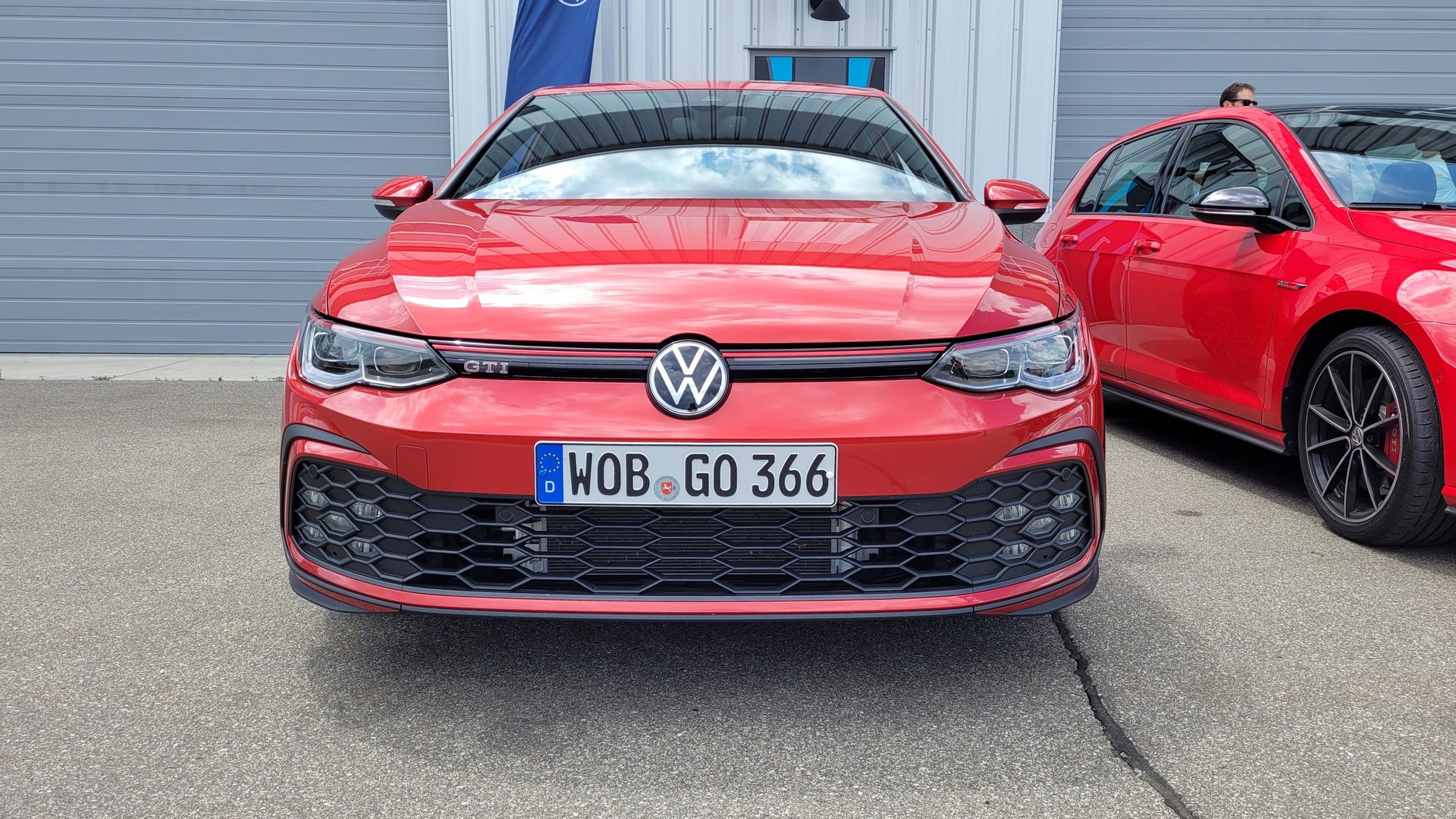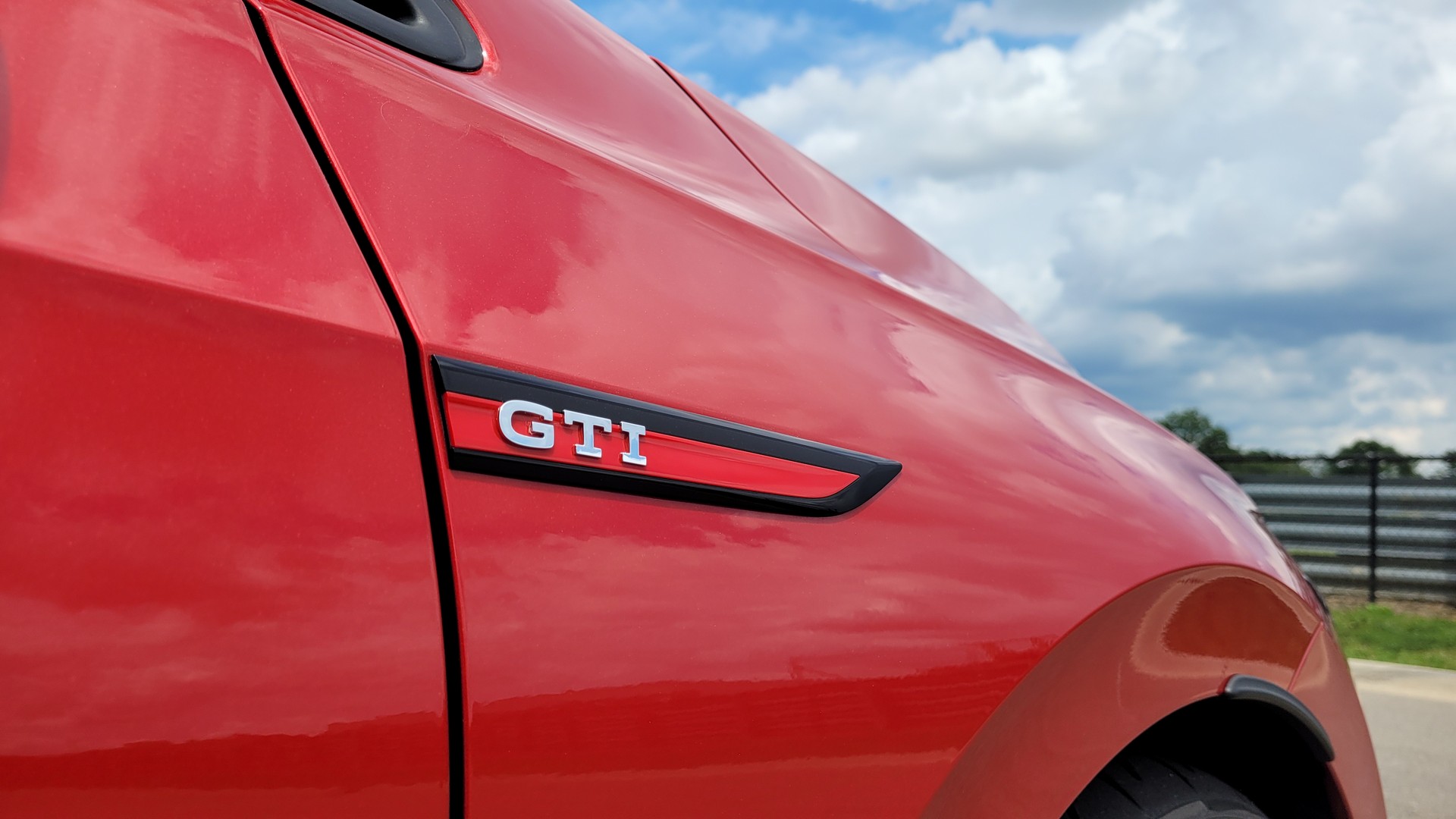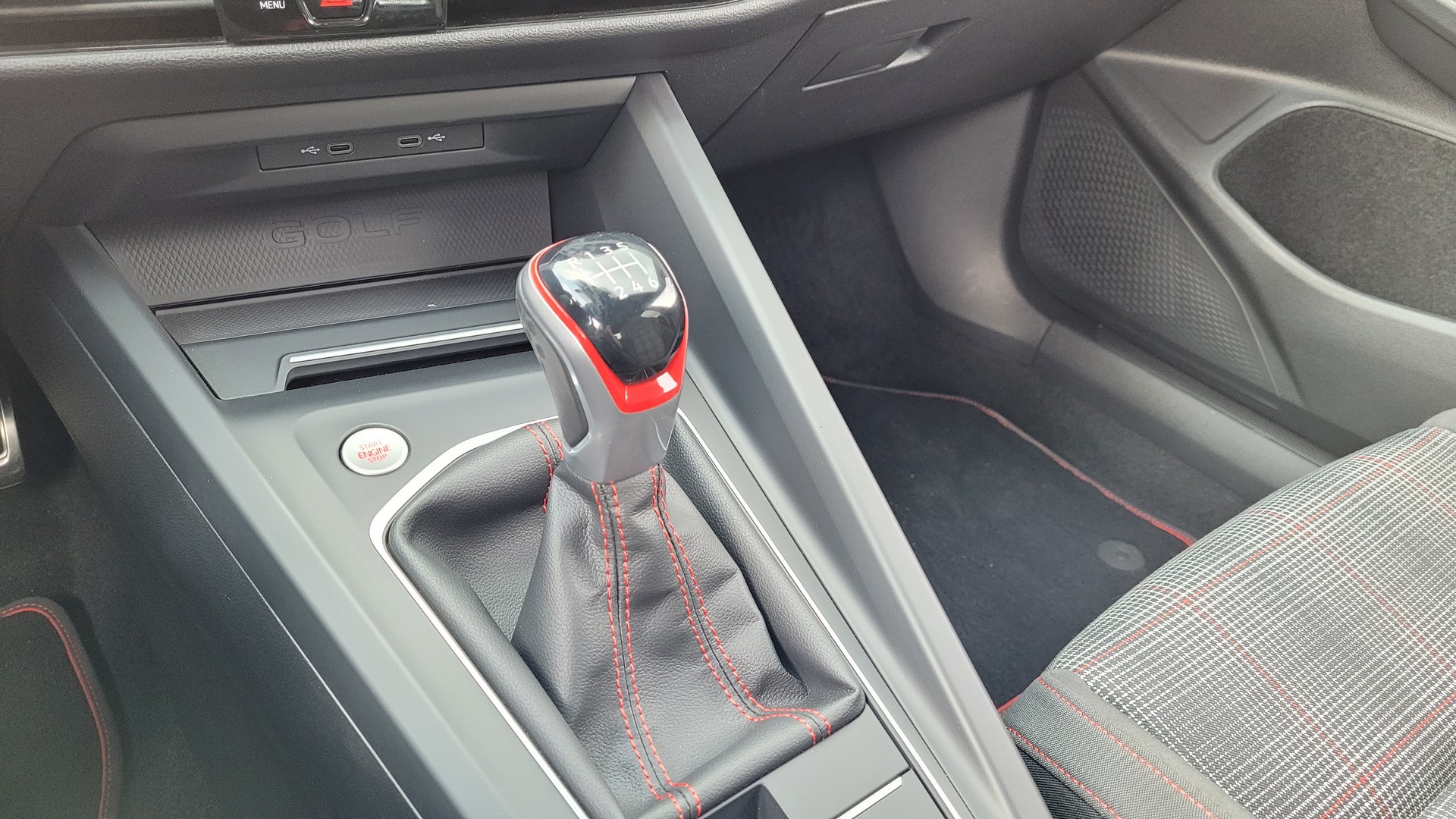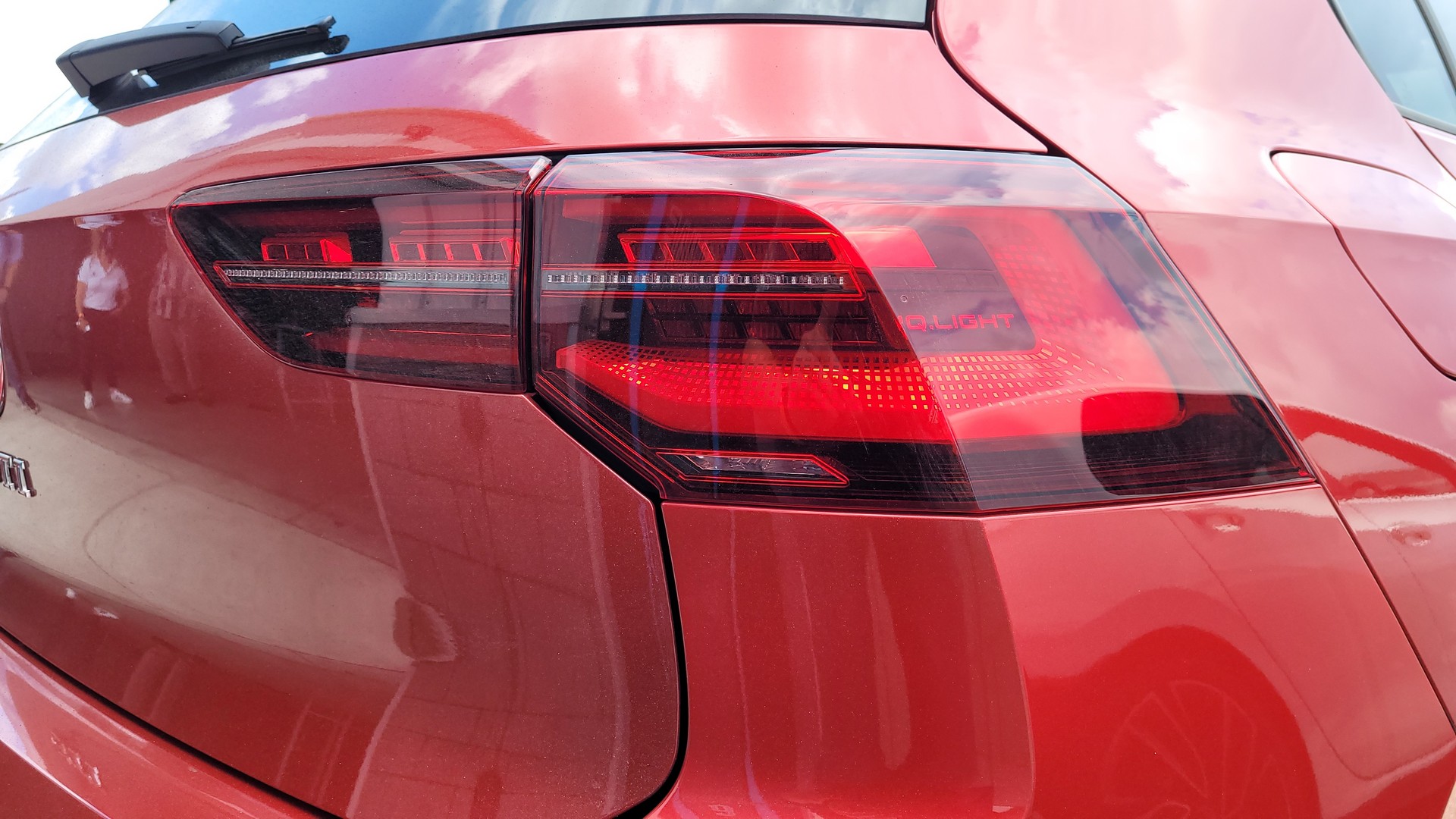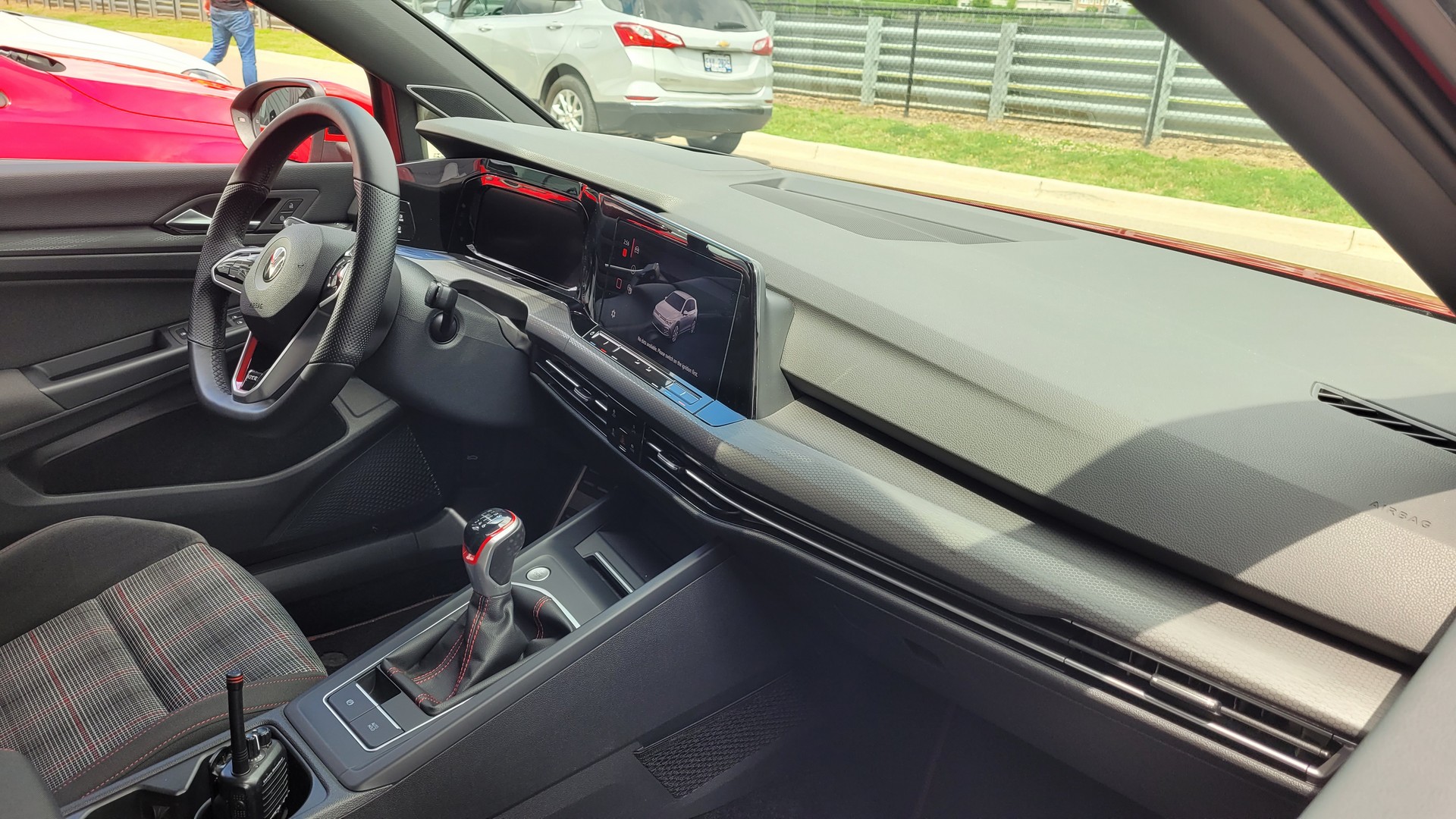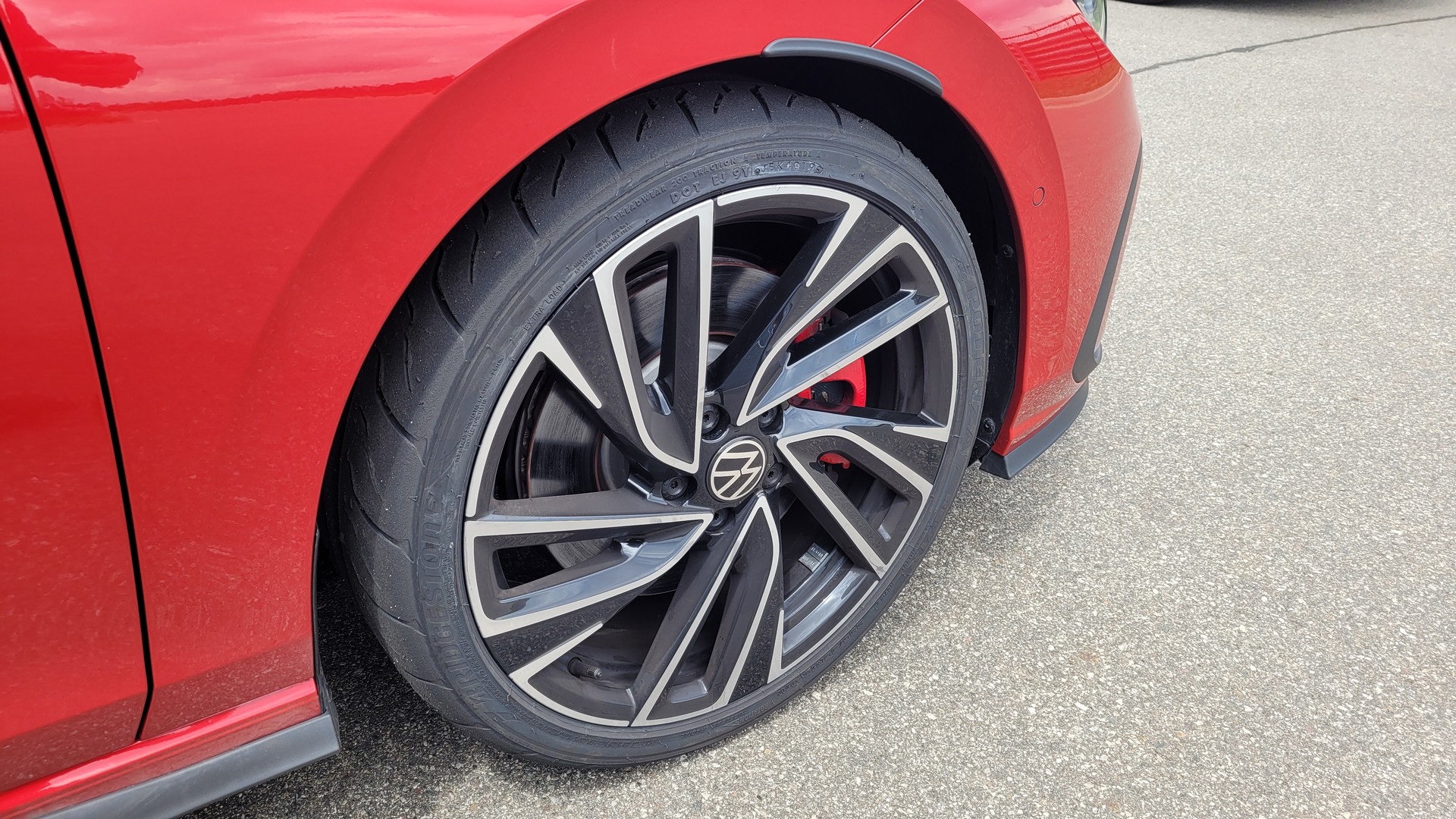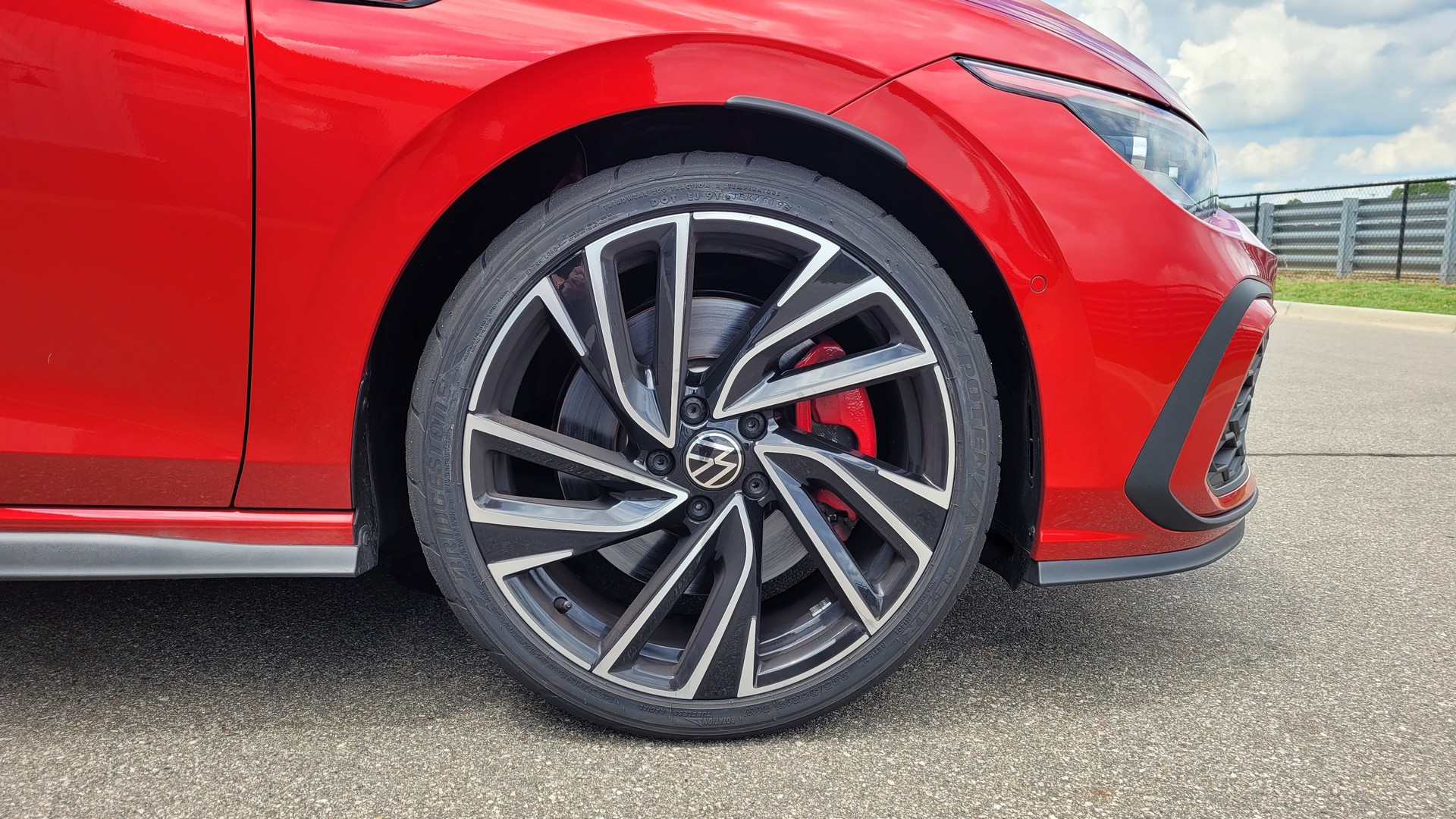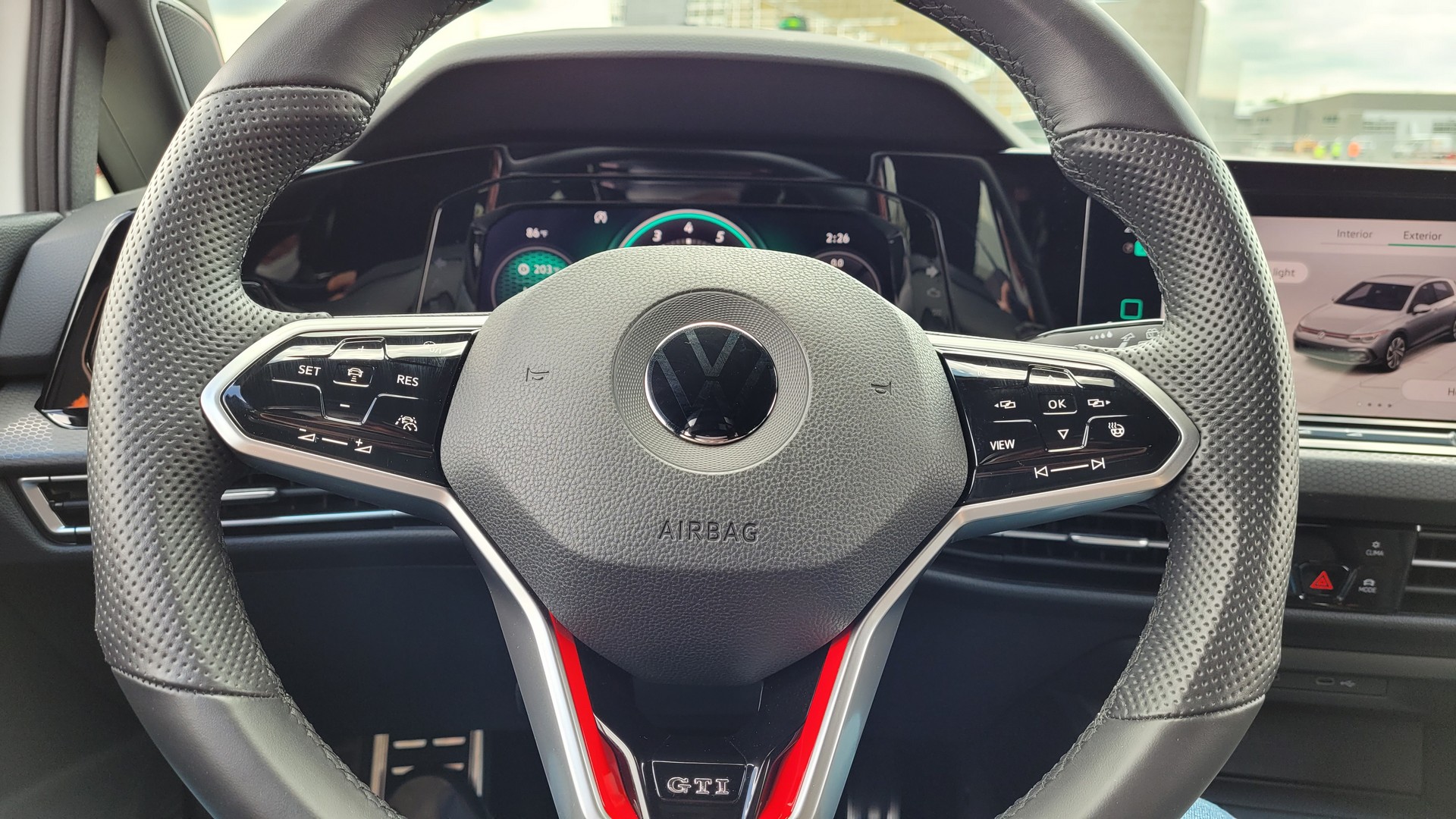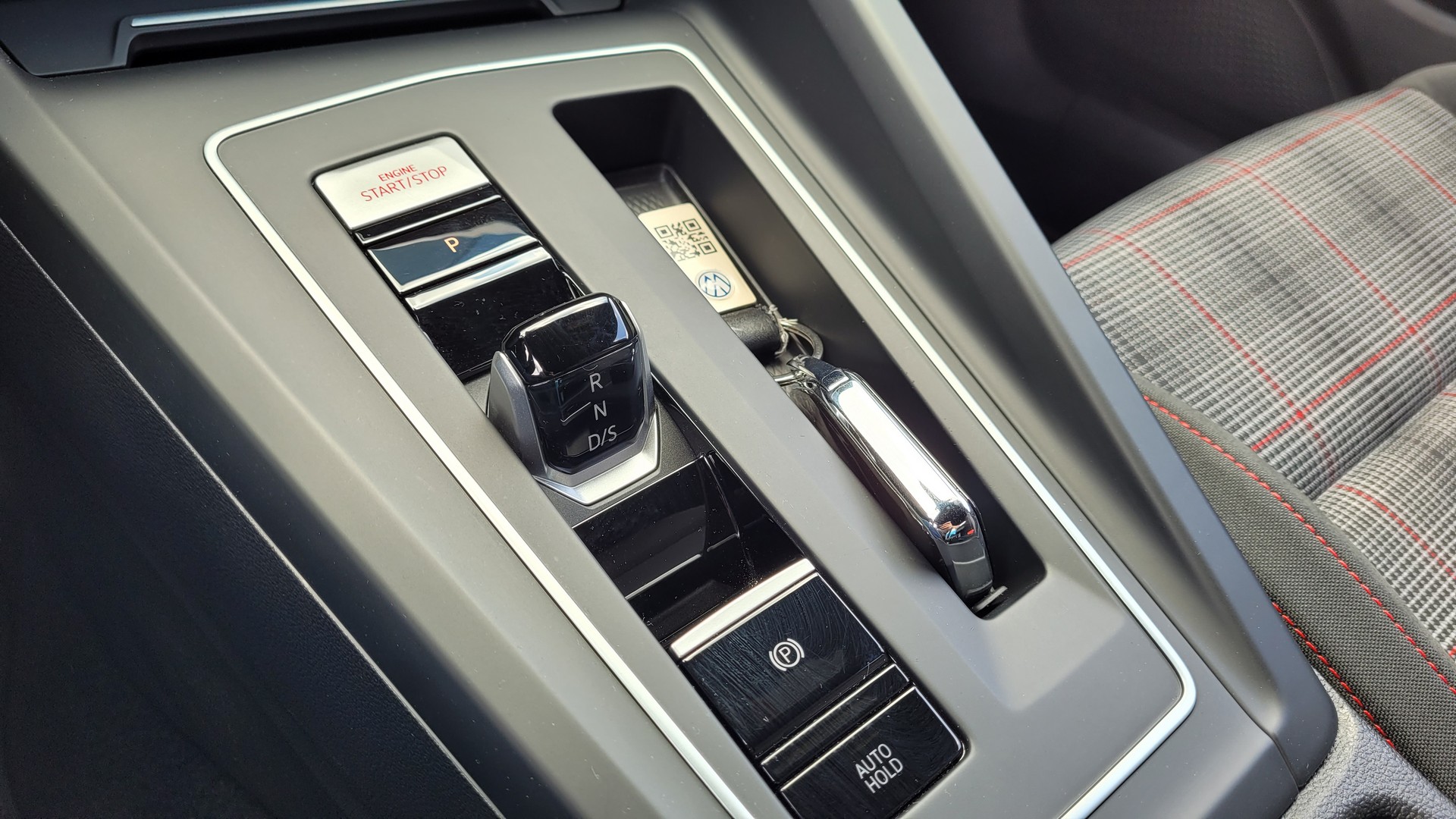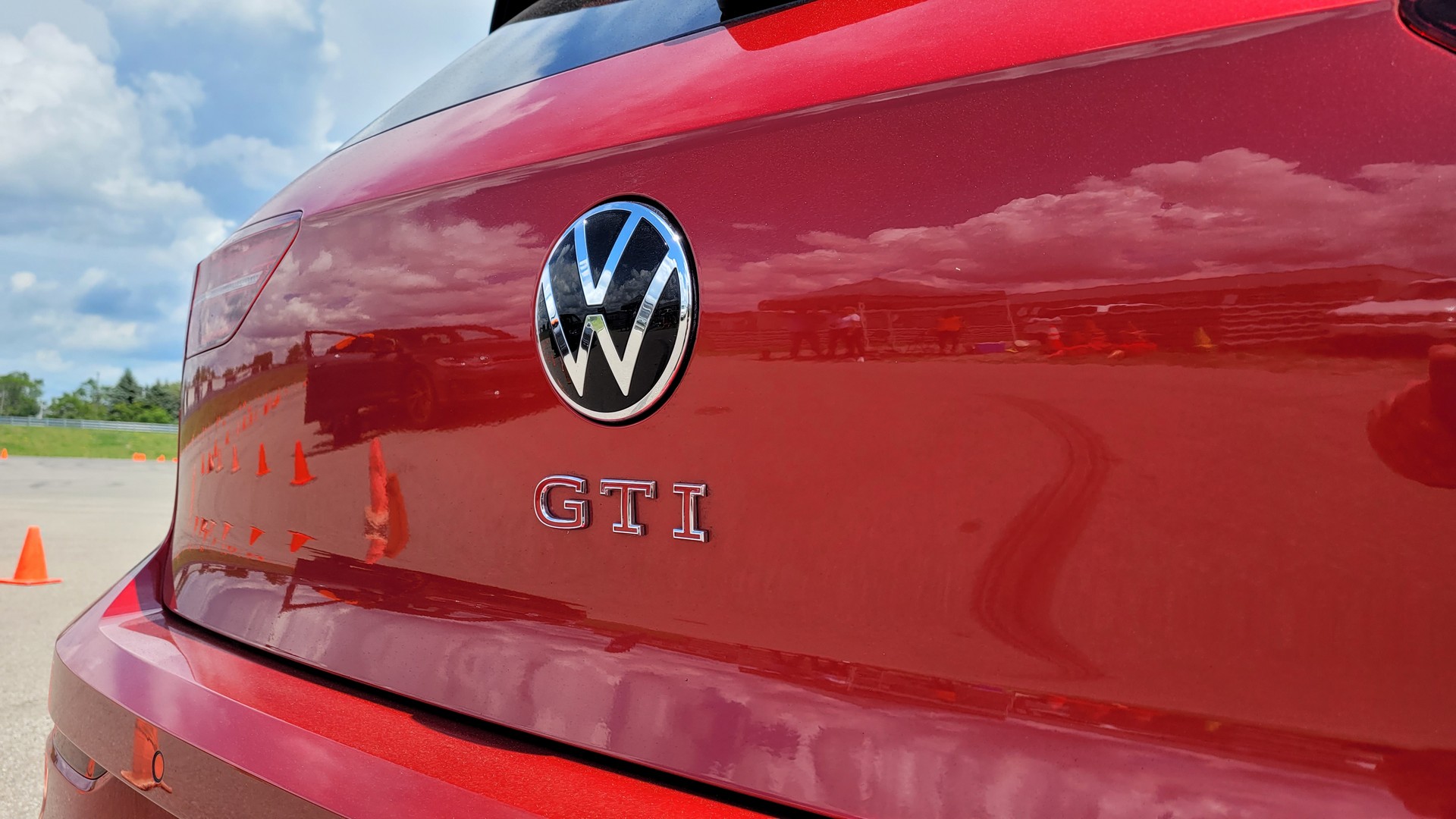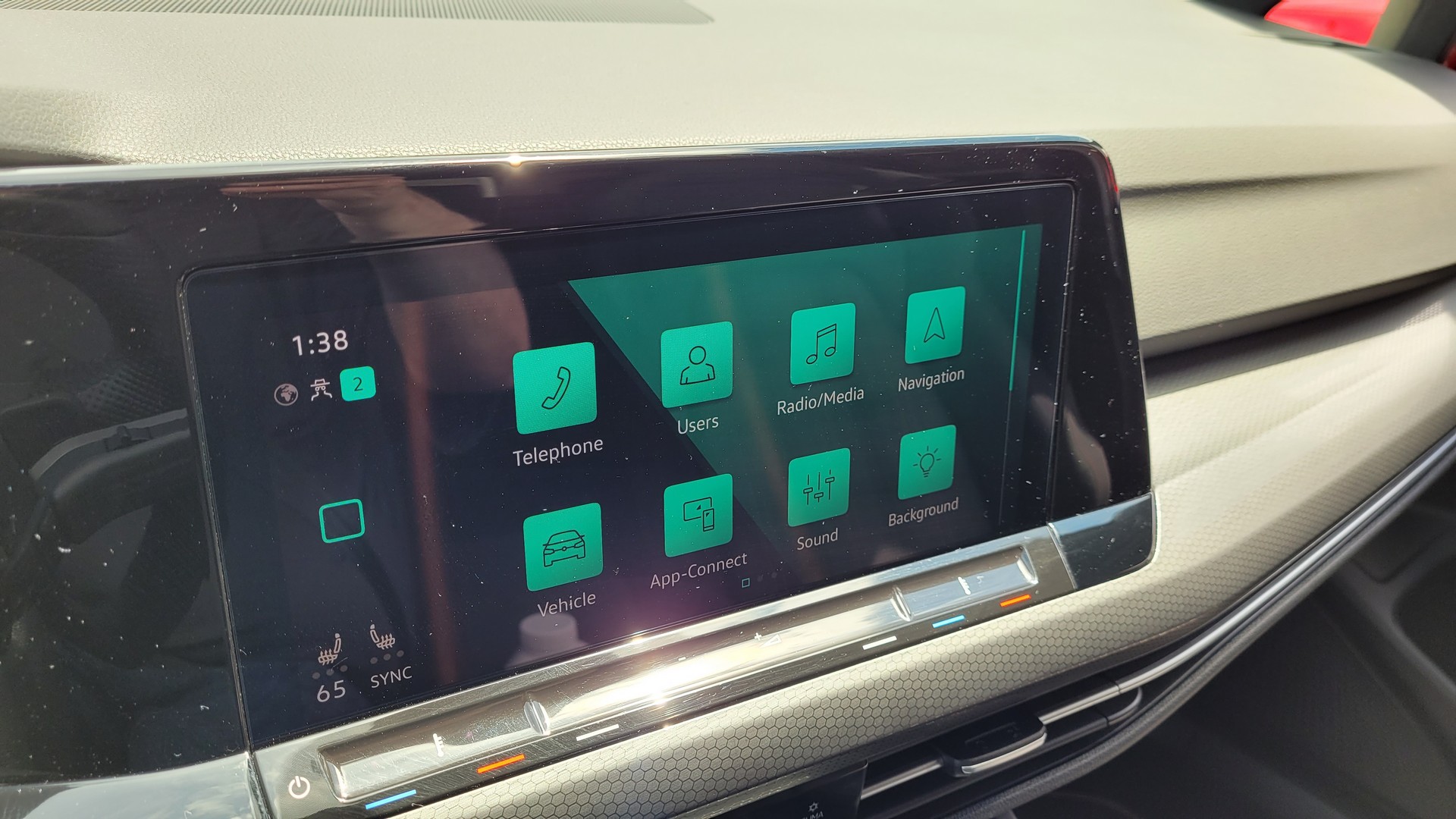Like it or not, hatchbacks are a dying breed in America as consumers have embraced crossovers with a cult-like fervor.
One of the biggest blows came in January when Volkswagen announced the standard Golf was being dropped after nearly five decades. However, it wasn’t all bad news as the company confirmed the redesigned performance Golf GTI and Golf R would be coming stateside this fall.
The move is the ultimate fan service to enthusiasts and we recently got a glimpse of what to expect as we track tested a Euro-spec Golf GTI Mk8 against its Mk7 predecessor. This back-to-back comparison is probably the best way to experience the new model as the Mk8 features small, evolutionary changes that add up to be a big improvement.
A Sleeker, Sportier Hatch
While the pandemic has eroded our sense of time, more than a year has passed since Volkswagen introduced the redesigned Golf GTI. That being said, it’s as handsome as ever as the model features a sportier and more modern design.
The front end is dominated by a wide honeycomb mesh intake, which features integrated fog lights that form the shape of an X. Above them are slimmer LED headlights and a minimalist grille featuring a familiar red line as well as an all-new LED light bar.
The sides and rear are more evolutionary, but the Mk8 features sleeker bodywork and a more pronounced shoulder line. The model has also been equipped with slimmer taillights, a bespoke rear spoiler, and a dual exhaust system that is separated by a minimalist diffuser.
The changes look good and the car’s drag coefficient drops from 0.3 to 0.275. This is partially achieved thanks to aerodynamically optimized mirrors, extensive underbody paneling and new wheel arch linings.
It’s All New And High Tech Inside
While the exterior features an evolutionary design, the same can’t be said about the cabin. Going from a Mk7 to a Mk8 is a radical change as the latter adopts a modern interior with plenty of new technology.
This is immediately apparent after sliding behind the flat-bottom steering wheel as drivers are greeted by a 10.25-inch digital instrument cluster, which makes the old analog gauges feel hopelessly dated. The cluster is customizable and drivers can press a new button on the steering wheel to pull up a display of a central rev counter that is flanked by reconfigurable gauges. Drivers can also pull up a full-size map to make navigating a little easier.
To the right is a minimalist dashboard, which is topped by a 10-inch infotainment system. We didn’t have much time to play around with it, but the cabin largely eschews traditional switchgear. In particular, there are new “touch sliders” that are used for adjusting the audio volume and climate control system. They’re pretty slick and blend into the dash.
Elsewhere, drivers will find new sport seats which feature classic tartan upholstery as well as red contrast stitching. Other highlights include a pulsating start button and a 30 color ambient lighting system.
While we didn’t spend a lot of time in the Mk8, our initial impressions are promising as the seats are comfortable and offer plenty of support for track use. There’s also plenty of room up front as this 6’ 2” reviewer didn’t have any problems getting comfortable behind the wheel even while wearing a helmet.
Furthermore, the interior looks good although a few hard plastics cheapen the experience. It’s also worth noting the minimalist design has tradeoffs and fans of physical switchgear will be disappointed.
A More Powerful Turbocharged Four
The latest Golf GTI is powered by a turbocharged 2.0-liter four-cylinder engine that produces 242 hp (180 kW / 245 PS) and 273 lb-ft (370 Nm) of torque. That’s a modest increase over its predecessor, which had 228 hp (170 kW / 231 PS) and 258 lb-ft (350 Nm) of torque. However, we’ll repeat here that these numbers represent the European-specification model that VW brought to the States, and we may (or may not) see some minor differences by the time it goes on sale here.
While the difference is small, it’s noticeable as we were able to hit higher speeds on straight sections of Michigan’s M1 Concourse. The extra power also helps when accelerating out of corners and Volkswagen noted the GTI Mk8 lapped their Ehra-Lessien test track nearly four seconds faster than its predecessor.
The engine is connected to a standard six-speed manual transmission, which works well and is pretty forgiving. However, most drivers will probably opt for the seven-speed dual-clutch gearbox which offers fast and smooth shifts. It’s also worth noting the automatic comes with a minimalist shifter, which echoes the one found on the Porsche 911 and has a separate park button.
The Golf GTI Mk8 Is “All About The Chassis”
While the latest GTI rides on the familiar MQB platform, there’s an assortment of changes to increase grip and improve driving dynamics.
Starting up front, there’s stiffer springs, new wishbone bearings and revised dampers. Engineers also gave the car a new aluminum subframe, which is nearly 7 lbs (3.2 kg) lighter than the one used in the Mk7.
The multilink rear suspension echoes the front as it features new wheel mounts and wishbone bearings as well as revised springs that are 15 percent stiffer than before. There are also reconfigured auxiliary springs as well as revised dampers.
Sticking with the performance theme, the US-spec model will come standard with an electronically controlled torque sensing limited-slip differential and an available adaptive chassis control system with Comfort, Eco, Sport and Individual modes. The steering has also been improved thanks to a more direct ratio as well as new software and algorithms.
One of the biggest changes is the addition of a new Vehicle Dynamics Manager, which “centrally coordinates all electromechanical running gear functions.” It’s a bit hard to explain, but think of it as the GTI’s ‘secret sauce.’
The VDM coordinates and activates the cars various functions – including the electronic stability control, the electronic XDS differential lock and the adaptive damping system – and gets them to work together. As the brains of the operation, the system helps to minimize understeer, maximize grip and deliver neutral handling.
While the system can probably be best explained by someone with a thick German accent, the results are apparent on the track as the GTI feels balanced and offers impressive levels of grip. This is clear when driving the Mk7 and Mk8 back-to-back as the newer hatch provides more traction and this helps to build driver confidence. This, in turn, inspires you to take corners harder and faster, and even then the car feels completely secure.
The hatch also handles well and the steering feels spot on. The brakes also provide plenty of stopping power and the model is actually more fun than some rear-wheel drive coupes. That’s a notable accomplishment and while the Golf GTI might not set any lap records, at least you’ll come away with a smile on your face.
A Fan Favorite Improved
We’ll learn more about the US-spec Golf GTI closer to launch, but a quick spin in the European model has us excited about the future. Its predecessor was a favorite with enthusiasts and Volkswagen seemingly took everything they loved about the car and made it better.
While we still have to see how the model handles the rigors of everyday life, the car certainly looks promising as it features sportier styling and a more high-tech interior. Throw in a more powerful engine and a new Vehicle Dynamics Manager, and it’s clear the Golf GTI should continue to build on its hot hatch legacy.






